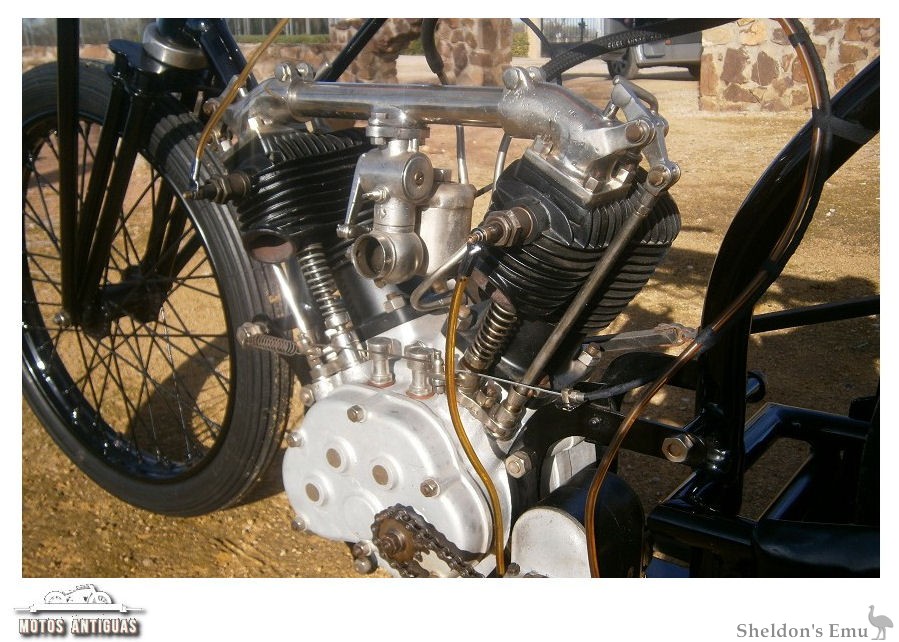




A Brief History of the Marque
Alessandro Anzani (1877 - 1956) was an aviation pioneer of Italian heritage who built engines in France while working with Buchet, among others. He formed his own company in 1906 to build aircraft engines, one of which powered Bleriot's flight across the English Channel in 1909.
Many motorcycles were built powered by Anzani engines, and some were built by Anzani himself. One of the Buchet racing machines was fitted with a three cylinder Anzani of 1200cc with the cylinders spaced at 45°. Under his own name Anzani developed a new version of this with the cylinders spaced at 72°. In the early 1970s a very sad example of the 216 degree V3 was rescued from a scrapyard and lovingly restored.
Later he moved back to Italy and created a motorcycle company there. See Anzani (Italy)
Source: Guélon Collection.
Anzani Engines.
In addition to complete motor cycles several engine makers exhibit a goodly display of engines. No greater variety can be found than that on the stand of A. Anzani. They are beautifully finished, but in these and other engines we noticed an absence of adjustable tappets. The smallest Anzani engine shown is the 2-3 h.p. 75 x 80 mm., a single-cylinder, with a gear-driven magneto set at an angle. Another single-cylinder is the 3-4 h.p., 85 x 87 mm., fitted with a mechanical oil pump and crank case sump. A twin-cylinder of the same dimensions is made, and has the magneto placed in front, as on the Morgan-Jap. A particularly interesting example of Signer Anzani's work is a V type 10-12 H.p. air-cooled engine (78 x 125 mm.), with the cylinders staggered and placed at a very narrow angle. It has overhead valves, and is suitable for cycle cars. A similar engine of 12-16 h.p. (105 x 120 mm.) is also shown.
The exhibit also contains several water-cooled models, both single and twin-cylinder. One of the most attractive engines on the stand is the side by side twin, the cylinders of which are cast in a pair, with an air space between. The dimensions are 60 x 90 mm. The magneto is placed at the rear, and the two-speed sliding gear is in the crank case. This is one of the few Anzani engines provided with adjustable tappets. A noticeable feature of most French motor cycle engines is the small diameter of the valve springs.
The Motor Cycle, October 1919
If you have a query or information about these vintage French machines please contact us